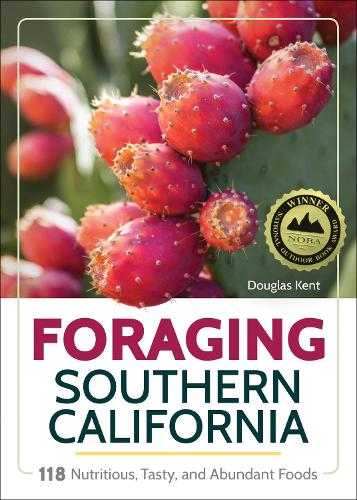
Foraging Southern California: 118 Nutritious, Tasty, and Abundant Foods
(Paperback)
Available Formats
Publishing Details
Foraging Southern California: 118 Nutritious, Tasty, and Abundant Foods
By (Author) Douglas Kent
Adventure Publications, Incorporated
Adventure Publications, Incorporated
4th February 2020
United States
Classifications
General
Non Fiction
581.632097949
Winner of National Outdoor Book Awards: Nature Guidebooks 2020 (United States)
Physical Properties
Paperback
256
Width 127mm, Height 177mm
317g
Description
Your Field Guide to Foraging for Wild Edibles: What, Where, and When to Look
Foraging for food is an engaging and beneficial pastime that anyone can enjoy. It inspires connections to the land and can help to improve your health. Plus, many target plants for foragers are non-native, so the activity can supportif not improvebiological diversity and ecological well-being. Foraging Southern California introduces you to plentiful and delicious foods, from berries and fruits to roots, seeds, and even tasty aquatic options, like kelp and crayfish.
Expert forager Douglas Kent shares his decades of experience in this handy guide thats perfect for beginners and intermediates. Learn what to look for, as well as when and where to look. Key identification features, written instructions, and full-color photographs help you to comfortably and confidently know that youre harvesting the right species. A compare section provides information on dangerous look-alikes, helping to ensure your foraging success and personal health. The Top 10 Edibles section provides a starting point for beginners, and species throughout the book are organized by harvestable quality, which quickly leads to the relevant information for your own foraging needs.
Foraging must be done with knowledge and consideration. Foraging Southern California provides information that can benefit you and the environment. Grab the book, get outside, and enjoy natures bounty.
Reviews
Foraging Southern Californiais a terrific little guidebook on natures edible goodies which easily slips into a pocket of your pack. Foraging expert, Douglas Kent takes care of the important stuff first. In the opening chapter, he pictures and describes the plants you want to stay away from: those that are toxic or poisonous. From there it is smooth sailing, setting the stage for a great day of foraging. Each of the edibles include a large color photograph and descriptive information on habitat, leaves, flowers, harvest season and comparable species. National Outdoor Book Awards ...even if you are not much of an explorer, but take an interest in plant lore generally, you will have a difficult time putting down this book until you have perused every page. Its a cornucopia of obscure information and unique insights regarding plants that are often familiar, that we thought we understood, but with which we are nowhaving read about them heremuch more intimately acquainted. Moreover, gardeners will derive particular satisfaction, I think, when they learn that many of the weeds they have long regarded as irredeemable enemies turn out to be, as far as edibility is concerned, potential friends. JoshuaSiskin, MediaNews Group, Inc. (Long Beach Press Telegram, OC Register, Pasadena Star News, etc.)
Author Bio
Douglas Kent, MS, MLA, began eating weeds in 1979. His mentor and great aunt, Catherine Peck, was well versed in Depression-Era foods. As a naturalist for the Environmental Nature Center (Newport Beach, CA) in the late 1980s he developed a deep respect for native crafting, eating and living. Since then his love of foraging, gardening and Californias landscapes have wildly grown. Doug has been working in and grazing Californias gardens for over 40 years. He has worked on hundreds of landscapes projects throughout the state. He has two advanced degrees in ecological land management. He has volunteered to restoration and urban food efforts in numerous communities. He has taught some aspect of foraging and/or wildcrafting at California State Polytechnic University, Pomona, since 2008. And Doug has written 6 other books on environmental horticulture. For some people foraging is about survival, to others it is about a spiritual connection with the land. To Doug, foraging is about everyday wellbeing and delight. He believes that California would be far healthier and resilient if we would embrace our nature and graze our impact and weeds.
